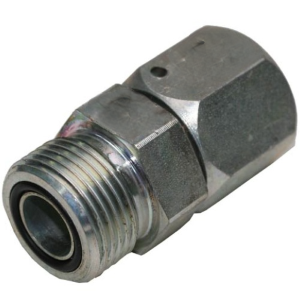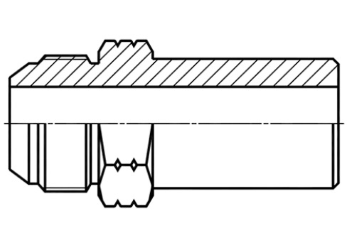SAE J1453 is a critical standard within the realm of engineering and manufacturing. It plays a pivotal role in ensuring the safety, reliability, and interchangeability of hydraulic fittings. This article delves into the world of SAE J1453, its history, scope, and its significance in various industries.
History of SAE J1453
Origins of SAE Standards
The Society of Automotive Engineers (SAE) has a rich history of developing and maintaining standards to drive innovation and safety across multiple industries. The origins of SAE J1453 can be traced back to the need for a common language and set of specifications for hydraulic fittings.
Evolution of SAE J1453
SAE J1453 has evolved over the years, adapting to the changing landscape of technology and engineering. It has gone through numerous revisions and updates to stay relevant and effective in a dynamic industry.
Key Milestones
Understanding the key milestones in the development of SAE J1453 provides insight into its continuous improvement. These milestones reflect the collective effort of experts and professionals who aim to enhance hydraulic systems' performance and safety.
Scope and Application
Understanding the Scope of SAE J1453
SAE J1453 primarily focuses on hydraulic fittings and connectors. It sets the standards for the design, dimensions, and performance criteria of these components.
Where SAE J1453 Applies
The scope of SAE J1453 is not limited to a specific industry. It has a broad application, ranging from the automotive sector to aerospace and industrial applications. It provides a common ground for manufacturers and engineers to ensure compatibility and reliability.
SAE J1453 vs. ISO Standards
While SAE J1453 is a significant standard, it's not the only one in the field. Understanding how it compares to ISO standards sheds light on the unique advantages it offers.
SAE J1453 Hydraulic Applications and Industry Relevance
Adapter SAE J1453 / SAE J514 with Swivel Nut
SAE J1453, standing for Society of Automotive Engineers Joint Technical Committee 1453, sets the benchmark for hydraulic connections. It meticulously defines parameters for O-ring face seal connectors, emphasizing features like leak-tightness and robust design. The standard ensures a secure and durable connection in hydraulic applications.
SAE J1453 finds extensive use in various industries, particularly in automotive applications, where precision and reliability are paramount. Its specifications cater to a range of hydraulic systems, offering a standardized approach that ensures compatibility and safety. The automotive sector, in particular, relies on SAE J1453 to maintain the integrity of hydraulic connections in critical components.
ISO 8434-2: Specifications & Global Adoption
Weld-on end
ISO, the International Organization for Standardization, contributes to the realm of hydraulic connections through standards like ISO 8434-2. This standard specifically addresses the design and performance of O-ring face seal connectors, aligning with the principles of leak-tightness and durability. ISO standards, with their global reach, aim to create a universal language for hydraulic connections.
The influence of ISO standards extends globally, emphasizing harmonization and interoperability. ISO 8434-2, in particular, has been adopted by industries worldwide, ensuring that hydraulic systems across different regions adhere to a common set of specifications. This global adoption streamlines manufacturing processes and facilitates the interchangeability of hydraulic components on an international scale.
Components and Specifications
Fittings and Connectors
Delving into the specifics of hydraulic fittings and connectors, such as their design, materials, and coatings, provides valuable insights into the intricate details of SAE J1453.
Materials and Coatings
The choice of materials and coatings is a crucial aspect of hydraulic fittings. SAE J1453 defines the requirements for materials, ensuring durability and longevity.
Performance Criteria
The performance criteria outlined in SAE J1453 set the bar for hydraulic components. Understanding these criteria is vital for evaluating their quality and reliability.
Benefits of Compliance
Quality Assurance
Compliance with SAE J1453 assures quality in hydraulic systems. Manufacturers can rely on these standards to produce components that meet stringent quality requirements.
Safety and Reliability
Safety is paramount in hydraulic systems, and SAE J1453 standards contribute to ensuring safe operation. Reliability is another key benefit, as components designed according to these standards are less likely to fail.
Interchangeability
One of the most significant advantages of compliance with SAE J1453 is interchangeability. Components from different manufacturers can seamlessly work together, reducing downtime and maintenance costs.
SAE J1453 in Various Industries
Automotive Sector
The automotive sector heavily relies on hydraulic systems, making SAE J1453 indispensable. From power steering to braking systems, these standards play a vital role.
Aerospace Applications
In the aerospace industry, where safety and reliability are paramount, SAE J1453 ensures that hydraulic components meet the stringent requirements of this sector.
Industrial and Hydraulic Systems
Industrial applications, from heavy machinery to manufacturing equipment, benefit from the standards set by SAE J1453. It ensures the smooth operation of critical hydraulic systems.
➡️ "SAE J1231: Defining The Standards"⬅️
Conclusion
In conclusion, SAE J1453 is not just a set of standards; it's a cornerstone of safety, reliability, and efficiency in the world of hydraulic systems. Its historical significance, broad scope, and real-world applications make it an essential tool for manufacturers and engineers. Embracing SAE J1453 ensures that hydraulic systems meet the highest standards of quality and performance, offering a future where safety and efficiency go hand in hand.
Post time: Nov-16-2023



